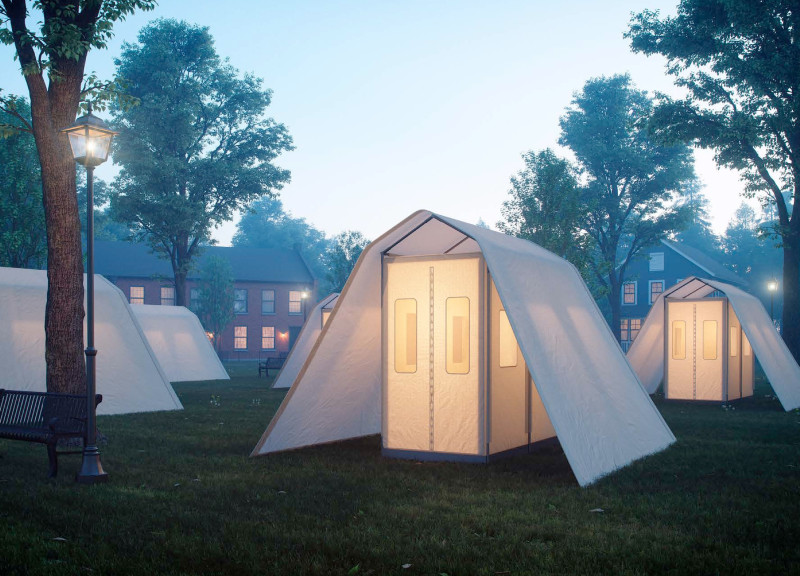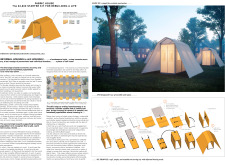5 key facts about this project
The Fabric House showcases a practical approach to temporary shelter for individuals facing homelessness. It focuses on creating safe, adaptable spaces in urban environments where the need for such housing is critical. The design promotes dignity and community, facilitating a path toward recovery for those who need support.
Structural Components
Walls and roofs consist of insulated airtrack cushions, wrapped in fire-retardant, self-extinguishing canvas fabric, built to meet NFPA 701 safety standards. This ensures that the structures offer warmth while providing crucial safety from fire hazards, creating a protective environment for occupants.
Flooring System
The flooring combines insulation with a plywood frame, topped with impermeable, fire-rated, non-slip quarry tile. This design enhances durability and addresses safety needs effectively. The non-slip surface is vital, especially during adverse weather, to prevent accidents and provide stability for those inside.
Elemental Protection
Rain and snow are managed by a protective layer made from the same fire-retardant canvas used for the walls. Treated with wax sealant, this cover withstands weather challenges like rain, snow, and hail, contributing to the overall comfort of the occupants while maintaining the shelter's integrity.
Support Structure
The frame uses galvanized 1" EMT conduit, which provides a strong yet lightweight base for easy assembly and disassembly. This adaptability allows the shelters to be relocated, aligning with the needs of transient populations and highlighting the importance of mobility in housing solutions.
The integration of various design elements results in a unified shelter that prioritizes safety and comfort for those in need. Each detail supports the overall mission of providing a secure space for recovery and community engagement.



















































